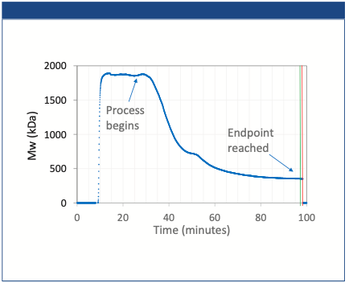
- The Application Notebook-02-02-2020
- Volume 38
- Issue 2
CDS Analytical - Analysis of Tetrahydrocannabinol Vape Oils Using Pyroprobe by Thermal Extraction
This application note demonstrates a multistep thermal extraction study on tetrahydrocannabinol (THC) vape oils.
E-cigarettes have gained popularity in recent years, in conjunction with the legalization of marijuana in many U.S. states. Authentic THC vape oils are not easily distinguishable from counterfeits, which are poorly regulated and can cause severe lung injuries. There has been a growing national interest in the effective analysis of THC vape oils. One of the challenges is that vape oil comes with a complex solvent and contains a variety of volatile and semivolatile ingredients. Before analysis via GC or HPLC, the sample needs to be either extracted or diluted before analysis, to avoid saturating the instrument. While these approaches may be adequate, they have limitations related to human error in wet chemistry and high cost through intensive labor. A direct thermal extraction of vape oils using a Pyroprobe can provide a fast and accurate solution.
Experimental Conditions
Each THC vape oil of 200 μg was thermally extracted using a multistep sequence by a CDS Analytical Model 6150 Pyroprobe with an autosampler module. The instrument was interfaced to a mainstream GC–MS instrument. A DISC tube was used as the sample vessel.
Pyroprobe:
Set points: 200 °C, 400 °C, 600 °C, 60 s
DISC Interface: 300 °C
Transfer Line: 300 °C
Valve Oven: 300 °C
GC-MS
Column: 5% phenyl (30 m × 0.25 mm)
Inlet: 360 °C
Carrier: Helium 1.25mL/min, 80:1 split
Oven: 40 °C for 2 min, 2 °C/min to 300 °C
Ion Source: 250 °C
Mass Range: 35–600 amu
Results
Figure 1 shows a THC vape oil extracted at three sequential temperatures, 200 °C, 400 °C, and then 600 °C. At 200 °C, THC vaporizes. At 400 °C, more THC, cannabinoids, and carrier agents are extracted, and at 600 °C, a trace of cannabinoids and carrier agents is detected.
From the multistep run, it was concluded that 400 °C was the optimized thermal extraction temperature. Figure 2 shows 400 °C runs on two different vape oils. The profiles for THC and other cannabinoids were quite similar (Figure 2, left). However, the carrier of these two vape oils differs (Figure 2, right). Vitamin E acetate, which is a known by the CDC to be added to illicit vapes, was not detected in either oil. Vape oil 1 contains a series of polyethylene glycols (PEG). PEG can create carcinogens like acetaldehyde and formaldehyde when heated to high temperatures.
Instead of PEG, vape oil 2 has a series of medium chain triglycerides (MCT), associated with coconut and palm kernel oils. While MCT oil is healthy to ingest, chronic vaping of this substance can cause lipid pneumonia, as oil coats the inside of the lungs preventing adequate oxygen exchange.
Conclusion
Multistep thermal extraction by Pyroprobe 6150 allows the analysis of volatile and semivolatiles directly to the gas chromatograph. Because there is no sample preparation step involved, thermal extraction can be an efficient way to analyze vape oil. Differences in semivolatile ingredients, specifically carriers, were found between two different THC vape oil brands.
CDS Analytical
465 Limestone Road, P.O. Box 277 Oxford, PA 19363-0277
tel: (610) 932-3636, (800) 541-6593
Website: www.cdsanalytical.com
Articles in this issue
almost 6 years ago
UCT - In-Well Hydrolysis Using UCT’s Refine Ultra-Filtration Technologyalmost 6 years ago
Wyatt - SEC-MALS Analysis of Linear and Branched Synthetic Amylosesalmost 6 years ago
Shodex - Oligonucleotide Analysis Using a Polymer-Based Diol Columnalmost 6 years ago
CEM - Rapid, Automated Extraction of Pesticides from a Strawberry CRMalmost 6 years ago
Tosoh Bioscience - Analysis of Oligonucleotides by SECalmost 6 years ago
Hamilton - Separation of Aflatoxins on HxSil C18Newsletter
Join the global community of analytical scientists who trust LCGC for insights on the latest techniques, trends, and expert solutions in chromatography.


